Mee Siam goreng is a rich, fried rice vermicelli noodle dish with bold flavours. It can be spicy and is enjoyed with strips of omelette, chives, maybe some sambal and the obligatory freshly squeezed lime juice.
Estimated reading time: 10 minutes
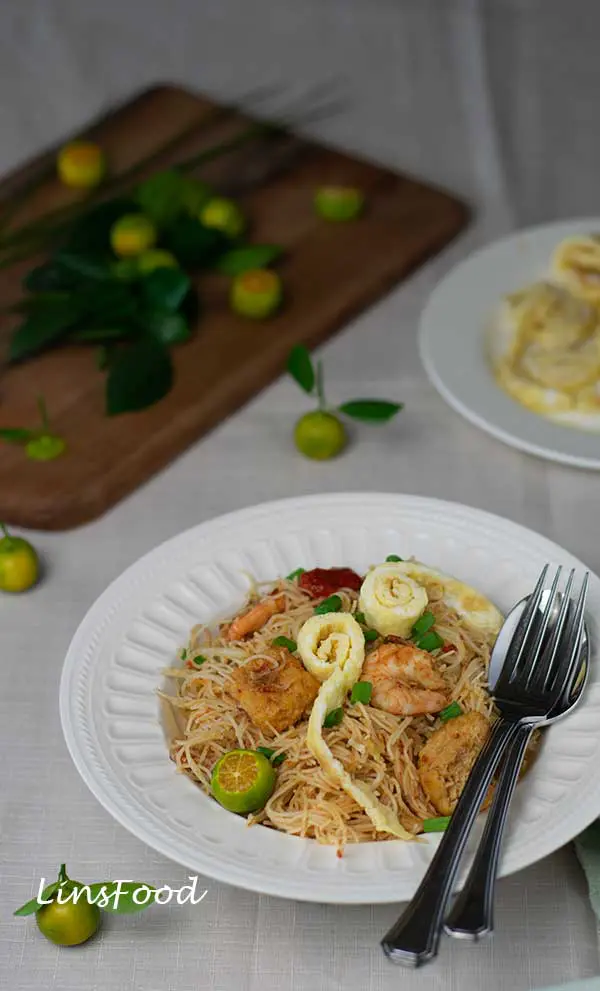
What is Mee Siam Goreng?
Let’s break it down, shall we?
In Malay:
- Mee = noodles
- Siam = the old name for Thailand
- Goreng = fried, to fry
- Kuah (bonus, next section) = gravy, sauce
Pronounced Mee Si-Yum Go-Rayng (go, as in Monopoly Go!)
Mee goreng means fried noodles, but this generally refers to yellow noodles that have been stir-fried. To differentiate between the 2, we say mee siam goreng when referring to this popular rice vermicelli noodle dish, which makes it gluten free.
Dry Fried Mee Siam
Because we have a wet mee siam too! The other mee siam is called mee siam kuah, mee siam basah or mee siam Singapore, as it’s also known in many parts of Malaysia. It’s lightly spiced, fried rice vermicelli served in gravy or spiced soup, if you like.
You can find my mee siam kuah recipe by clicking on the button below.
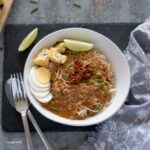
You can find dry fried rice vermicelli noodles all over South East Asia. It’s also known as fried bee hoon or bihun, and you may have also heard of the Filipino pancit bihon.
What differentiates the Singaporean or Malaysian mee siam goreng is the spice paste that we use, or rempah, as we call it in Malay. Incidentally. the Malays, Nyonyas and Eurasians in these two countries use this word when talking about spice paste. And even some Indians and Chinese.
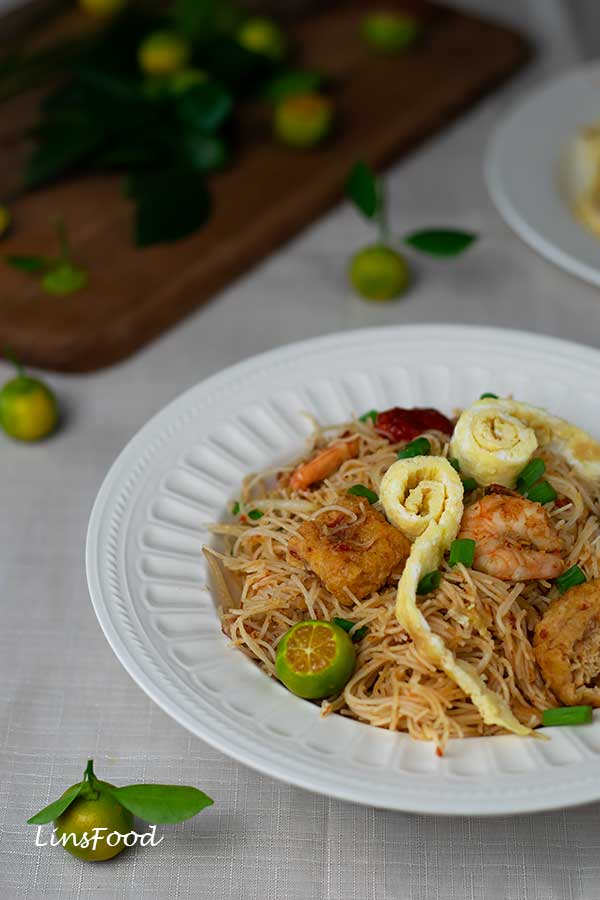
Dry Mee Siam Goreng Recipe
I’ve always identified these noodles as a Malay dish. However, the Nyonya community also lays claim to it, but if truth be told, you won’t really find a whole lot of difference between the two.
It is a straightforward recipe, although there are a few easy parts to it. This is what we’ll be doing.
1. Soaking of Ingredients
We soak the noodles, the dried red chillies, the dried shrimp and tamarind. More on the noodles below. The dried red chillies need to be soaked before they will grind.
I don’t usually soak dried shrimp these days before using. However, I do it here, as I love adding the shrimp soaking liquid to our noodles when frying, for added flavour.
The tamarind pulp needs to be soaked before the juice can be extracted. Nothing beats this traditional method. But if you prefer, use shop bought tamarind paste.
2. Make the Spice Paste (Rempah)
We then chop up the paste ingredients in a food chopper or processor. Really, no one uses the pestle and mortar for this much. Not the hawkers and certainly not many cooks, modern or otherwise. My grandma was using food processors to make her spice pastes in the 70s.
3. Fry the Tofu
Fried tofu is a big part of this noodle dish. You can use ready fried tofu pieces from the supermarket or puffed tofu pieces called taupok from East Asian stores.
But I like to fry slices of tofu for this, because I much prefer them with my mee siam goreng. This is only a 3-4 minute job that includes slicing the fresh tofu.
4.Fry the Omelette
Our fried mee siam is served with strips of omelette. So we get this done before frying the noodles. All we do is fry thin pieces of omelette, roll them up, then cut them in strips. You’ll see me doing this in the video.
5. Fry up the Noodles
Now it’s time to get really cooking. We start by frying our spice paste for a good 10 – 15 minutes to reach the stage where the oil separates from the paste. In Malay, we call this pecah minyak, something I addressed in our Nasi Lemak article.
- pecah = to break, broken
- minyak = oil
This is absolutely crucial, no cheating here. This long, frying time contributes to that bold flavour that is a must for the best mee siam goreng flavour.
10 minutes or 15, I explain in the recipe card.
The Ingredients
Rice Vermicelli
This is what mee siam is, so you absolutely must have these. They are very, very easy to come by as long as you have an East Asian store near you or access to online shopping.
Here in the UK, our larger supermarkets even stock fresh rice vermicelli, which means no soaking required. Just be sure to get the plain ones, and not the ones coated in curry powder sold as “Singapore Noodles”.
How to Soak Rice Vermicelli Noodles?
I have a simple method for this.
If I’m serving the noodles in gravy, like in mee siam kuah, I soak them in hot water for a few short minutes.
However, if I’m frying up the noodles as in today’s recipe, I soak them in room temperature water. Now this is all relative depending on where you live.
Think of it as Goldilocks water – not hot and not cold! Technically, it would be around 25 Celsius (78F). So top up your ice cold tap water with a little hot water to bring it up to water that is neither warm nor cool.
Why? Because rice vermicelli noodles that are soaked in hot water are more prone to breaking when stir-fried. When you soak them in room temperature water, they retain their integrity, and you have nice long strands, that don’t get clumpy or mushy.
But you have to take this into account when frying them up, as they won’t cook in seconds as the hot water noodles. You may have to add a little more liquid to get them to the right cooked texture.
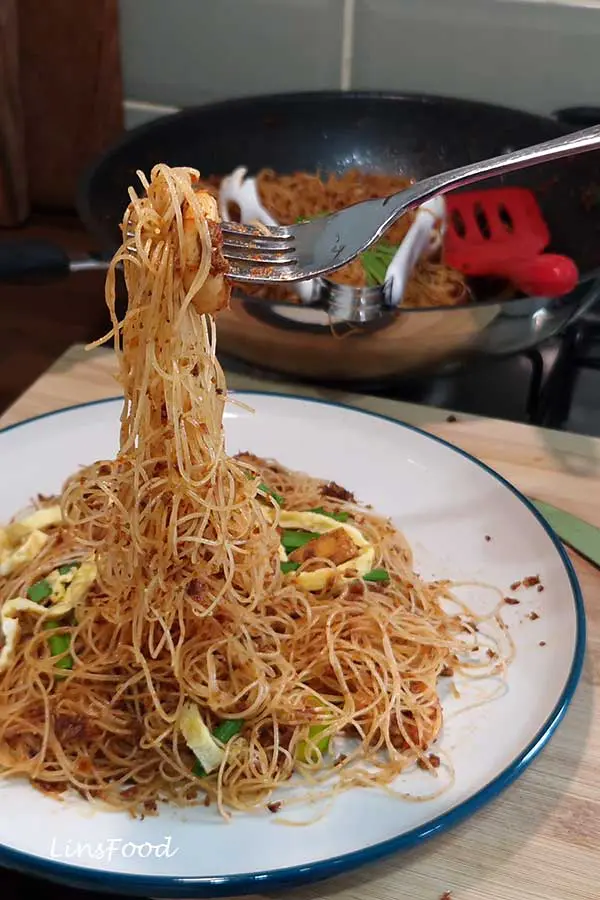
Spice Paste (Rempah)
The spice paste is what differentiates mee siam goreng from a regular old fried bee hoon dish. We’ve got:
- dried red chillies (fresh can be used instead, see below)
- onion
- garlic
- dried shrimp (udang kering in Malay)
- taucheo (salted soybeans)
Dried Red Chillies
You can also use fresh chillies if you like. However, dried chillies have a deeper and earthier flavour than fresh. Use the same number of chillies.
You could also use 3 Tbsp of sambal oelek (shop bought or homemade sambal oelek on LinsFood) or sambal balado, recipe on this site.

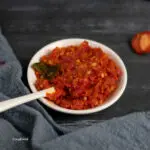
Dried Shrimp
Called udang kering in Malay, these are essential in South East Asian cooking. You’ll also find them in East Asian stores and certainly on Amazon and online Asian grocers. Click here to get it on Amazon (affiliate link).
Some people also use shrimp paste (belacan), but I’ve never done so.
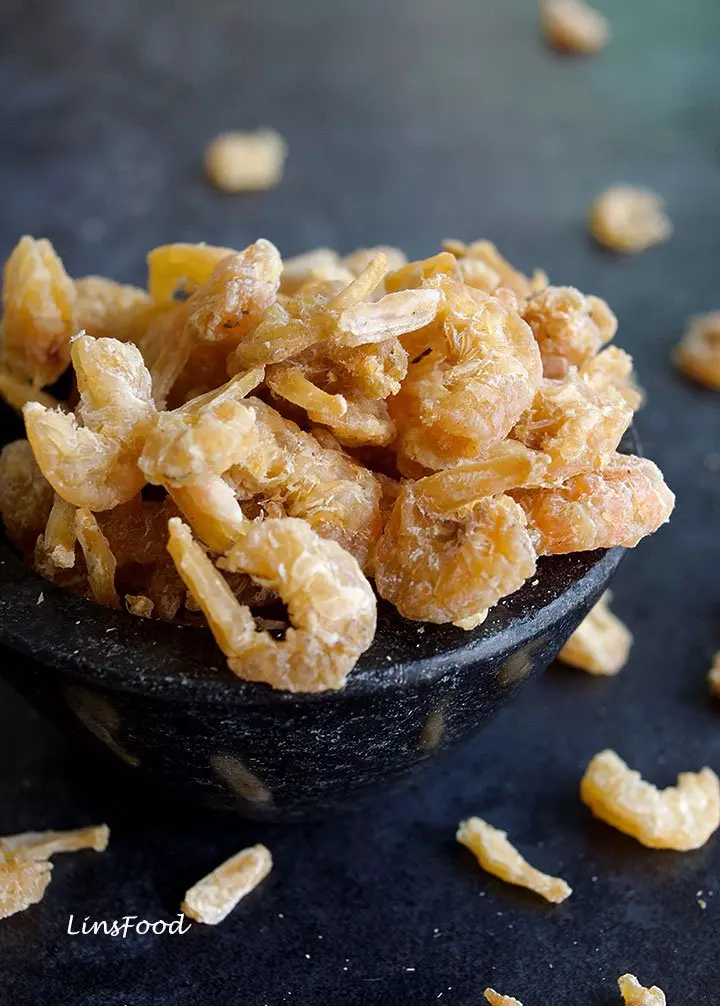
Vegetables
Many, many people will fry up their mee siam without any vegetables, and that’s what I’ve done here. However, it is not uncommon to use that ubiquitous stir-fry vegetable – beansprouts. You could also throw in a handful of spinach leaves if you fancy some green.
But that’s as far as you should go if you want to cook up an authentic mee siam goreng the way we do in Singapore and Malaysia.
I’ve given both vegetables as options in the recipe card below.
Protein
There’s always some sort of protein in this fragrant fried vermicelli dish. It’s usually a combination of prawns (shrimp) and tofu.
You can also use chicken if you like.
Flavouring
Besides the spice paste, the flavouring for our mee siam goreng is also provided by taucheo, the irresistible sweet-sour tamarind, a little tomato paste and some sugar.
Now if you’ve been a long time follower of LinsFood, you’ll know that I like to combine flavourings into a single bowl and pour it all at the same time into the wok. This makes the cooking process easier and stops the noodles from overcooking.
That’s what I’ve done here.
Taucheo (or Taucu)
This is salted and fermented soya beans and adds richness and depth to our noodles. I have a diy recipe here, if you fancy making your own.
You can read more here and find substitute ideas in the form of other yellow bean pastes or even miso paste, in a pinch. You absolutely need the flavour that these fermented soybeans impart, if you want to cook up this authentic Singaporean dish.
We lighty mash the taucheo before using. My mum wasn’t a fan of bits of these fermented beans in her noodles, and would always add the taucheo to the spice paste.
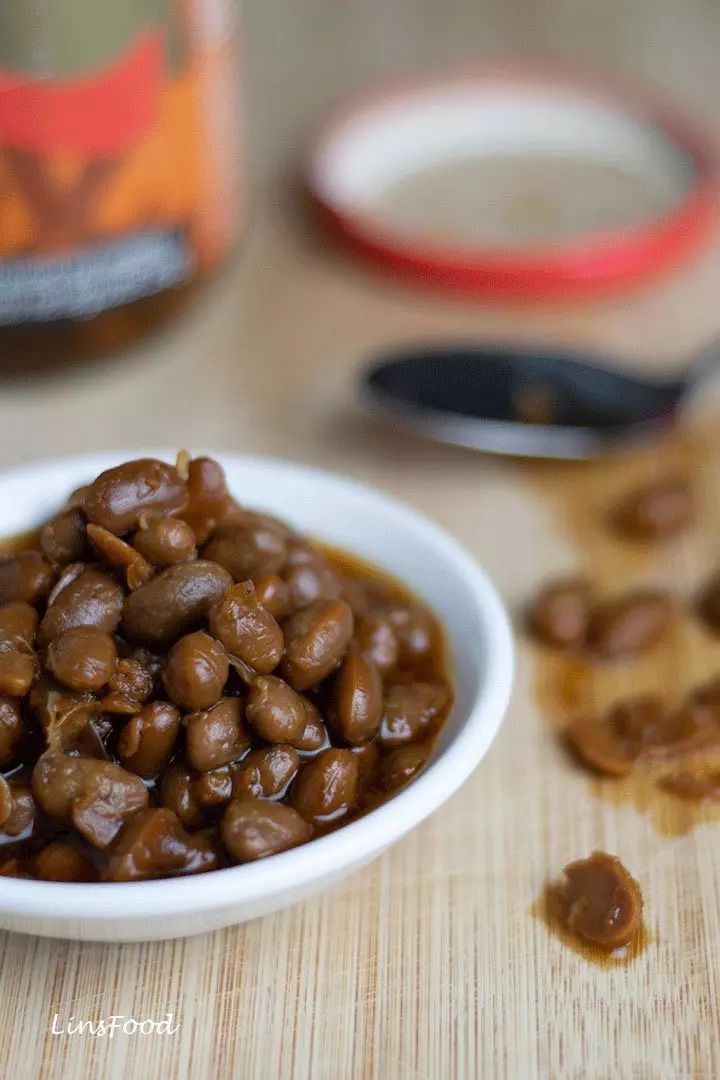
Vegan Mee Siam Goreng
It’s pretty easy to convert this recipe to a vegan one. We need to lose the prawns and shrimps, the fresh and the dried.
Let’s do the fresh prawns (shrimp) first. You can substitute this with more tofu, tempeh or just some stir-fry friendly vegetables like shredded cabbage, carrots and green beans.
The dried shrimp are a little more complicated. They are responsible for a big part of the flavour in these noodles. If you’ve been a long time LinsFood follower, you’ll know that my go-to vegan umami ingredient is shiitake.
To make vegan mee siam goreng, leave out the dried shrimp in the spice paste and replace it with at least 100g (3.5 oz) fresh shiitake, ideally 150g (about 5 oz).
You don’t want dried shiitake as they’ll have a smoky flavour that’s just not welcome in our Malay and Nyonya fried noodles.
How to Serve Mee Siam Goreng?
Garnishes are an important part of noodles. Depending on the noodle dish, this can be as conservative or as elaborate as you like.
We usually serve Mee Siam goreng with just some calamondin limes (or regular lime wedges), strips of omelette, Chinese chives (called daun kuchai in Malay) and a dollop of sambal. Regular chives will work too.
- daun = leaf
- kuchai = chives
You could serve hard-boiled eggs, if you prefer that to omelettes. Cut them in halves or quarters.
What sambal to serve with mee siam goreng? Any simple sambal like sambal tumis (Nasi Lemak sambal), sambal oelek or even sambal balado will work here. Sambal kicap is another great option.
Leftovers
Any leftovers will keep in the fridge, covered, for a day. Heat it up by stir-frying in in a wok with a tablespoon or two of water. Or, my preferred method is just in the microwave oven. One portion will only need 2 minutes, stirred halfway through.
And there you go, all the ins and outs of cooking the best mee siam goreng ever! Shall we get going?
If you enjoy the recipe, drop me a comment and let me know. And if you are feeling like a star, don’t forget that 5-star rating! 😉Thank you!
If you make this recipe, post it on Instagram or Facebook and tag me @azlinbloor and hashtag it #linsfood.
Lin xx
